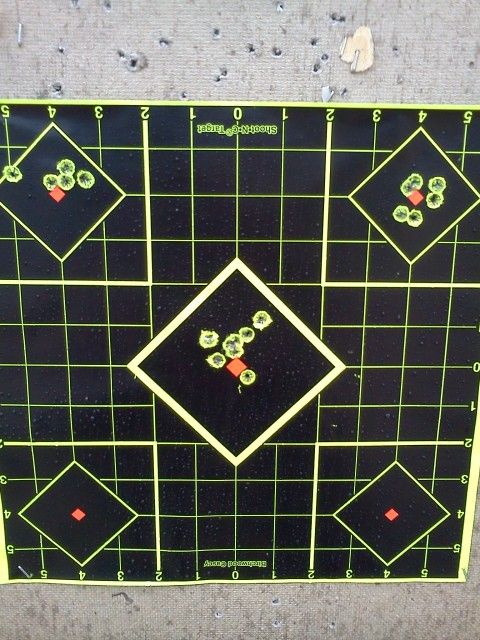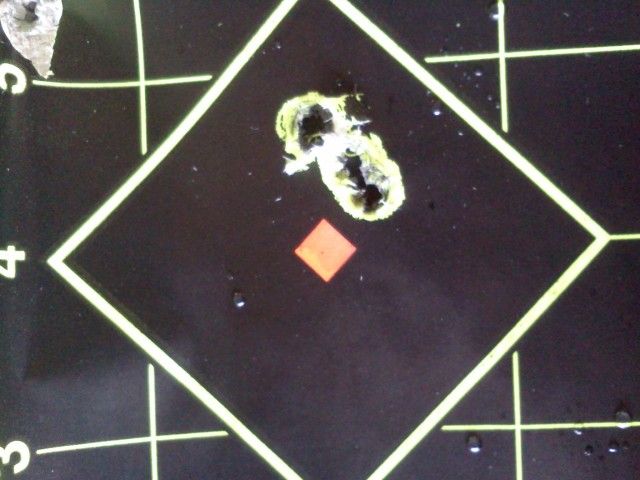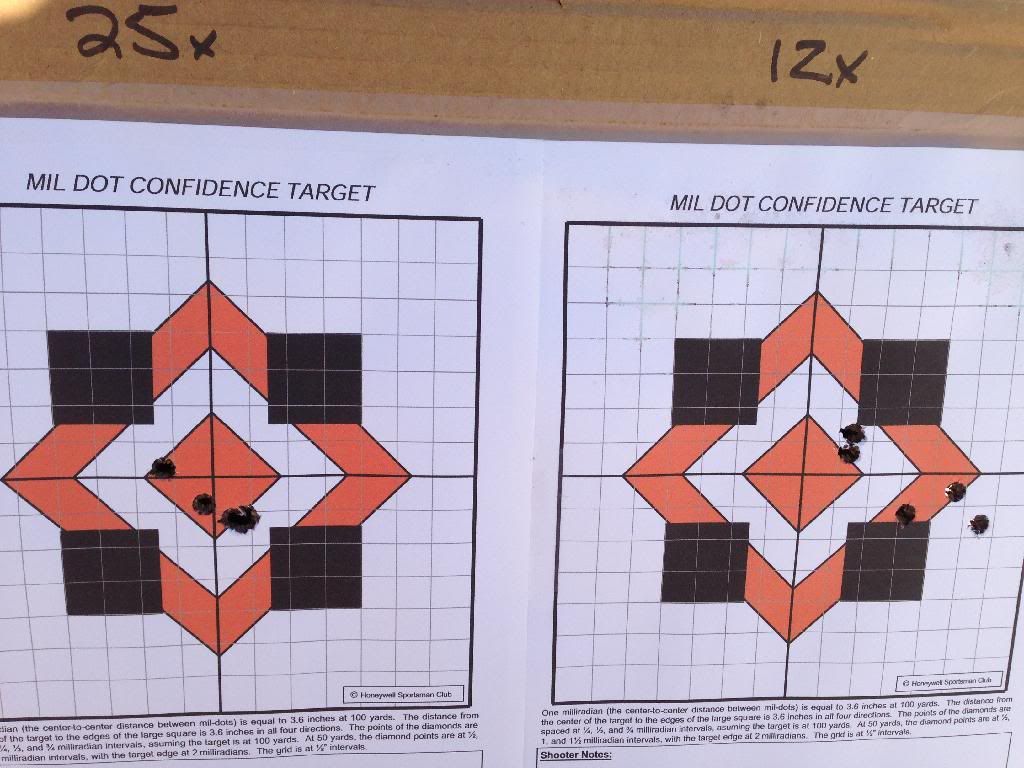Hey guys, weird situation here! When i set up my rifle originally, i had thrown a Bushnell Elite 3200 3-9x50 on top of her. At 9x magnification @100 yards i was shooting easy sub-moa groups all day every day. I shot my rifle with this set up for about 4 months. I loved the scope but wanted something a little more substantial for longer range, so i picked up a Weaver 4-20x50 and fell in love with it.
Now here's the funny thing; I was shooting the last couple of weeks with my new scope mounted up and had it cranked to 20x @100 yards. I noticed my groups opening substantially! Granted the weather was not great but nothing that would effect my groups that badly. my groups ended up like this today:

I decided what the heck, and dropped it back down to 9x, and ended up with groups like this for the rest of the day, this was 4 rounds:

I am completely stumped on what's going on here. Any ideas??? Sorry for the kinda new guy post, but i'm still a little new in the terms of precision shooting. Thanks for reading!
Now here's the funny thing; I was shooting the last couple of weeks with my new scope mounted up and had it cranked to 20x @100 yards. I noticed my groups opening substantially! Granted the weather was not great but nothing that would effect my groups that badly. my groups ended up like this today:

I decided what the heck, and dropped it back down to 9x, and ended up with groups like this for the rest of the day, this was 4 rounds:

I am completely stumped on what's going on here. Any ideas??? Sorry for the kinda new guy post, but i'm still a little new in the terms of precision shooting. Thanks for reading!






